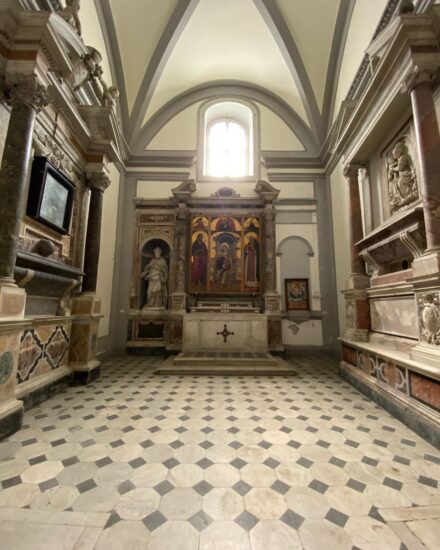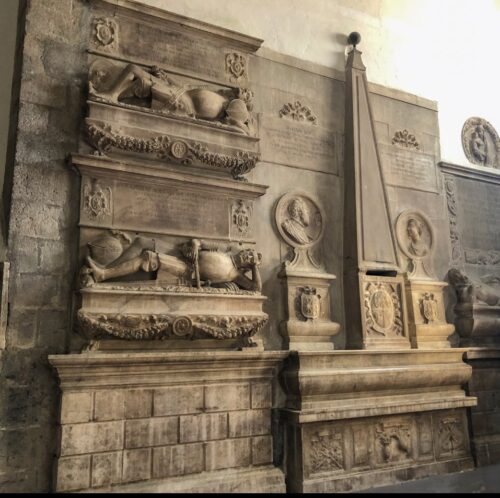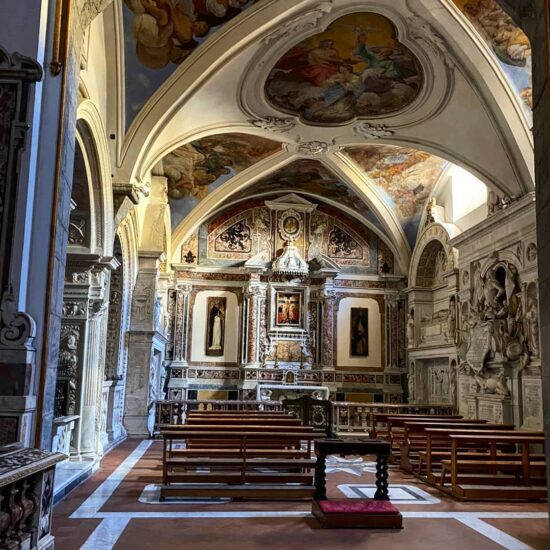San Domenico Maggiore
Visiting the monumental complex of San Domenico Maggiore in Naples (today the Doma Museum ) is a suggestive experience that spans 8 centuries of art, history, culture, and faith. In this complex, which is one of the most important monuments of the Neapolitan historic center, they left traces from San Tommaso d’Aquino to Giordano Bruno and Tommaso Campanella, from Titian to Michelangelo da Caravaggio, from Raphael to Giuseppe de Ribera, from Tino di Camaino to Francesco Solimena, from Luca Giordano aLuigi Vanvitelli, Domenico Vaccaro, Cosimo Fanzago, Mattia Preti and a multitude of other well-known and lesser-known artists.

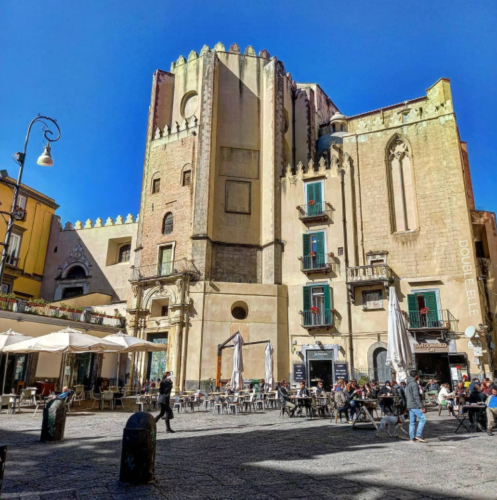
The foundation of the church dates back to 1283, the year in which Charles II of Anjou financed its construction and entrusted the imposing Gothic building (completed in 1324) to the Friars Preachers (the Dominicans), who still reside in the convent where lived San Tommaso d’Aquino and that from 1515 to 1615 and from 1701 to 1736 was the seat of the University of Naples.
The monumental complex is located in the middle of the historic center of Naples declared a World Heritage Site by Unesco, between the lower and the greater Decumanus. Since the Renaissance it has represented an important role in the history of the city thanks also to the choice of the Aragonese kings to raise the church of San Domenico to a dynastic pantheon: in fact, here it is still possible to admire its tombs, the so-called Aragonese Arks.
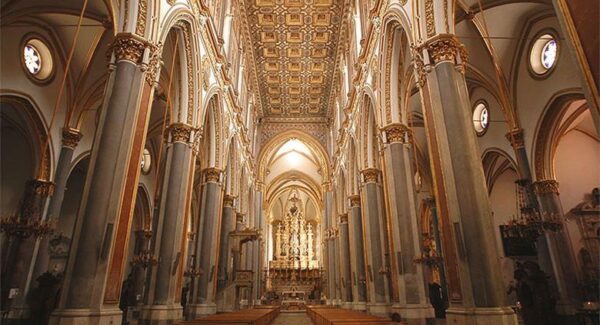
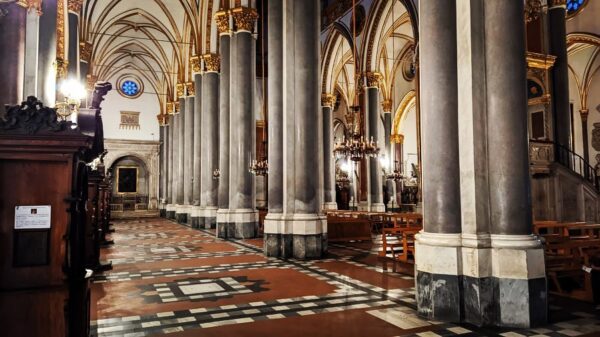
The majestic Basilica, in which an organ of 1640 pipes resounds, has a peculiarity: in Piazza San Domenico Maggiore it shows itself with the apse and not with the main facade. The primary entrance, on the other hand, opens up into the courtyard of the convent. From the square, built after the church, the Basilica is accessed through the large staircase on the western side, commissioned by Alfonso I of Aragon for the Romanesque church of San Michele Arcangelo in Morfisa, incorporated into the complex, which leads to the right transept of the Basilica.

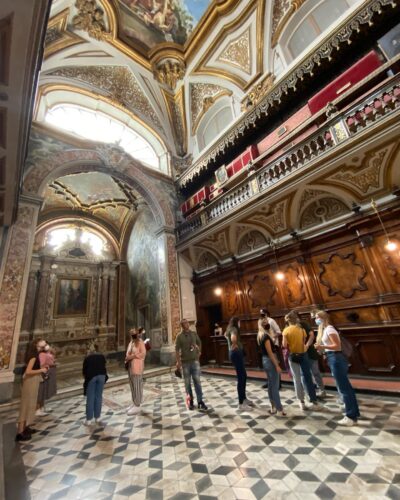

The standard museum itinerary with a guided tour includes the Sacristy, the Aragonese Arks, the Hall of Sacred Furniture with the Collection of 16th-century clothes, and the Salvator Mundi of the Leonardo da Vinci school. The complete museum itinerary, always with a guided tour, culminates with a visit to the Corridor and the Cell of San Tommaso d’Aquino and, when possible, to the Chapter Hall and the Refectories.
The saint philosopher studied and lived several times in the Basilica of San Domenico Maggiore: here are preserved objects that belonged to the saint and the prodigious crucifix of the thirteenth century, which according to tradition spoke to the Aquinas friar. MORE
